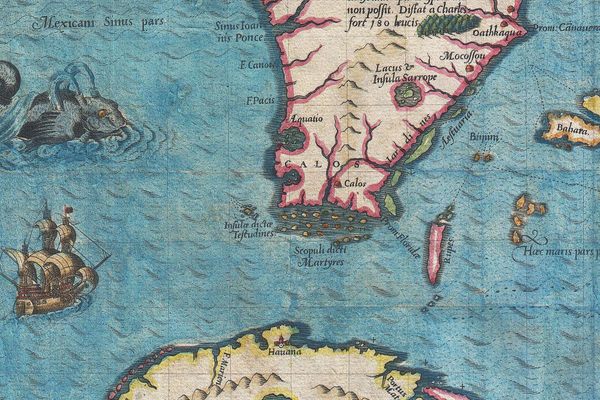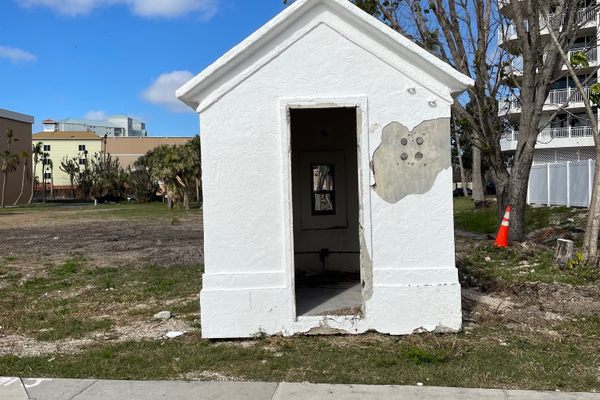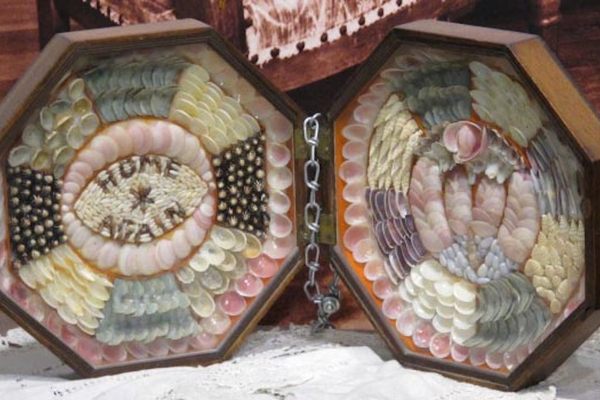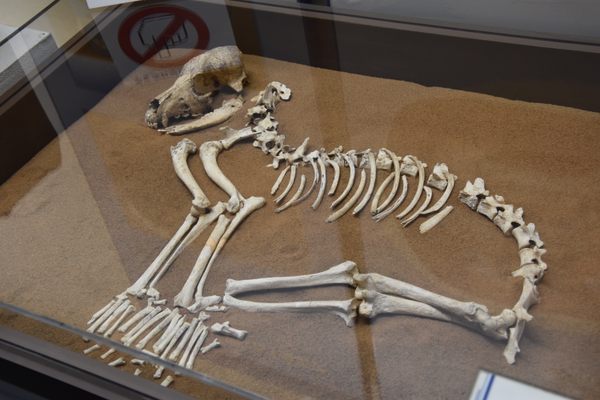AO Edited
Mound Key Archaeological State Park
Long before Europeans arrived, Native Americans built an artificial island out of shells that has withstood a millennia of hurricanes.
The 30-foot summit of Mound Key is a stark contrast to other, low-lying mangrove islands dotting Florida’s Estero Bay. The artificial island, created from layers of countless shells, bones, and other material, was built by the Calusa people at least a thousand years ago. It served as their political and cultural seat well into the 1700s. At its highest point, a grand hall large enough to hold 2,000 people overlooked an urban center on par with contemporary Aztec city-states.
The Calusa kingdom held political influence over southwest Florida for thousands of years. The seafaring culture engineered a complex system of canals and water courts, some of which are still visible at Mound Key, to cultivate fish.
The Calusa are unusual among large, complex societies for not practicing agriculture. They’re also notable for managing to keep colonizers at bay for more than 200 years. During one of their first skirmishes with the Spanish, in 1521, Calusa fighters mortally wounded Ponce de León, solidifying their reputation as formidable warriors.
Eventually, the Calusa kingdom succumbed to European diseases and the ravages of war. By the 1800s, surviving Calusa had left the area and white settlers had moved onto Mound Key. One of the new arrivals was Mollie Johnson, who was half Cherokee. Historians credit her willingness to share her considerable knowledge of farming, midwifery, and other skills with helping nearby communities survive.
Today on Mound Key, part of what’s known as the Calusa Coast, there’s a .75-mile out-and-back hike on the island, which tops the summit and meanders through mangrove and subtropical hammock forests. The park is also on the Calusa Blueway Paddling Trail, where you’re likely to see manatees, dolphins, herons, and osprey.
Know Before You Go
Mound Key Archaeological State Park is only accessible by kayak or small motor boat, or on a boat tour available from a number of local private companies. There are no docks, but there are landing areas on the northwest and southeast sides of the island. The most popular access launches are Koreshan State Park (4.5 miles east) and Lovers Key State Park (1.5 miles south). There are no facilities on the island.
Many of its interpretive signs were destroyed by Hurricane Ian in 2022, but Koreshan and Mound House, located in Fort Myers Beach, have exhibits and other information on Mound Key and its history. Plan on encountering mosquitos, wear appropriate shoes, and call Koreshan State Park (239-992-0311) for current conditions.

















Follow us on Twitter to get the latest on the world's hidden wonders.
Like us on Facebook to get the latest on the world's hidden wonders.
Follow us on Twitter Like us on Facebook